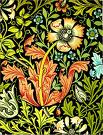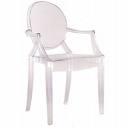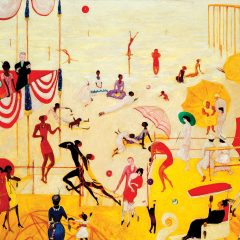Post by Andrea Kirsh

Raymond Loewy pencil sharpener (1934)
In preparation for Design Philadelphia, I thought I’d do some homework, so pulled out a book by Philadelphian, George H. Marcus: “Masters of Modern Design; A Critical Assessment” (Monacelli Press, 2005). The book grew out of a course that Marcus taught at Penn where he examined a dozen of the Twentieth Century’s major designers. His central question is each designer’s stance towards modernism, whose demise, Marcus suggests, was “much heralded, but never realized.” Marcus discusses their social and political ideals as well as their varied attitudes towards industrial production and mass distribution.

Design students interested in the political implications of style should also see Debora Silverman’s superb study, “ Art Nouveau in fin_de_siecle France: Politics, Psychology, and Style” (UC Press, 1989); Silverman shows that while Art Nouveau may appear pan-European stylistically, it had entirely different philosophical and political motivations from one country to another; rather like realism in Twentieth Century art (my analogy, not Silverman’s).

Philippe Starck Louis Ghost armchair (2002)
Marcus’ choice of designers is broadly international (British, Belgian, Austrian, American, Swiss, German, Italian, Japanese and French) although many readers will miss their favorites, and may wonder about the choice of Marianne Brandt representing the Bauhaus, or the lack of Scandinavian designers in a selection that includes both Achille Castiglioni and Ettore Sottas. The book focuses overwhelmingly on the design of domestic furnishings and appliances (from a refrigerator by Loewy to a light switch by Castiglioni), with the occasional digression into transportation (Loewy’s train and automobiles), commercial interiors (by van de Velde, Sottass, Kuramata and Starck) and exhibition display (Hoffmann, the Eamses’ and Castiglioni).

Marianne Brandt tea infuser (1924)
The writing is admirably clear and readable, and the approach free of polemics. Marcus discusses the career of each designer in the context of current social and economic issues as well as then- current attitudes towards design. The book is indexed and has brief suggestions for further reading on each designer, but no full bibliography, suggesting it is intended for beginning students or the general reader. It will function admirably for both audiences, as well as for a more knowledgeable reader looking for an overview.

Achille and Pier Castiglioni Arco floor lamp (1962)
The book is beautifully-produced with handsome illustrations and well-printed. If I have a quibble, it is with the design. The layout is good and the overall impression is attractive, but the text is often printed with half a sentence against a white background and the other half against beige, which makes for dreadful reading; the captions are numbered but the corresponding illustrations are not, and the book employs some odd typography. Surely this would have been a suitable place for that workhorse of Twentieth Century type (for the sans serif): Helvetica.
[Ed. note: While they’re over now, I want to mention two University of the Arts design shows, one of which I saw last week. I saw the show of work by the late modern design maverick Dan Friedman at Rosenwald-Wolf Gallery. I have photos of the Dan Friedman show at flickr. Previous to that, Uarts showcased Philadelphia designer Matthew Leibowitz in a show at Hamilton/Arronson Galleries. Uarts has a big industrial design department — and a graphic design department now celebrating its 40th anniversary! The industrial design graduate program has a focus on sustainable design. Local practitioner of green design, Jaime Salm who co-founded Mio Culture got his undergraduate degree from Uarts. Salm is participating in Design Philadelphia, as are many other local design producers and gurus. Be sure to check out the Design Philadelphia website for talks, exhibits and more.]









